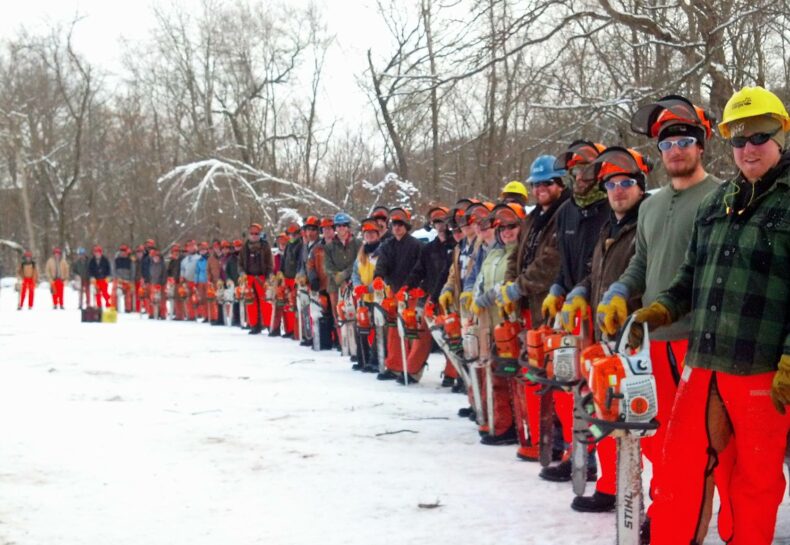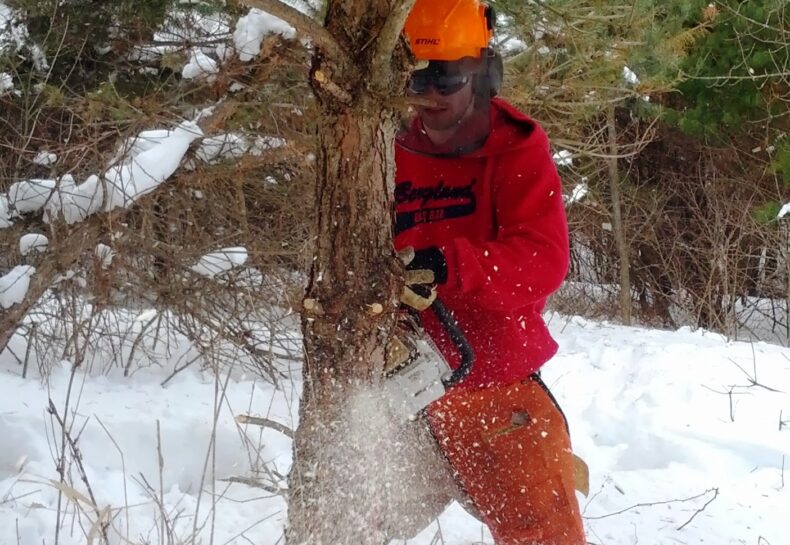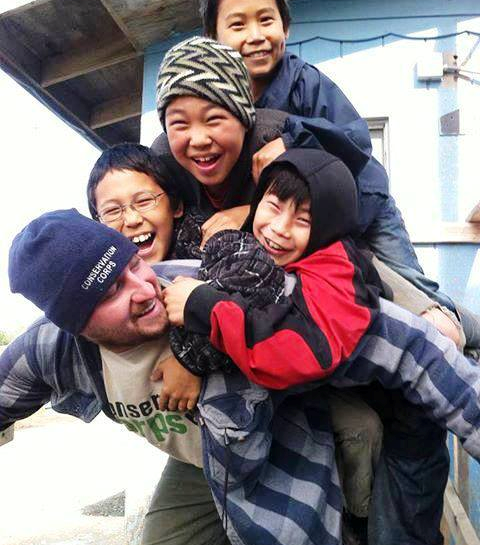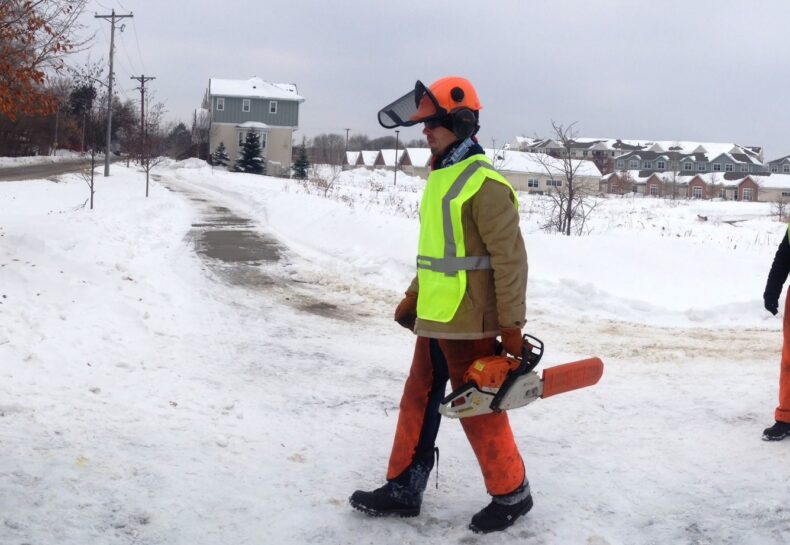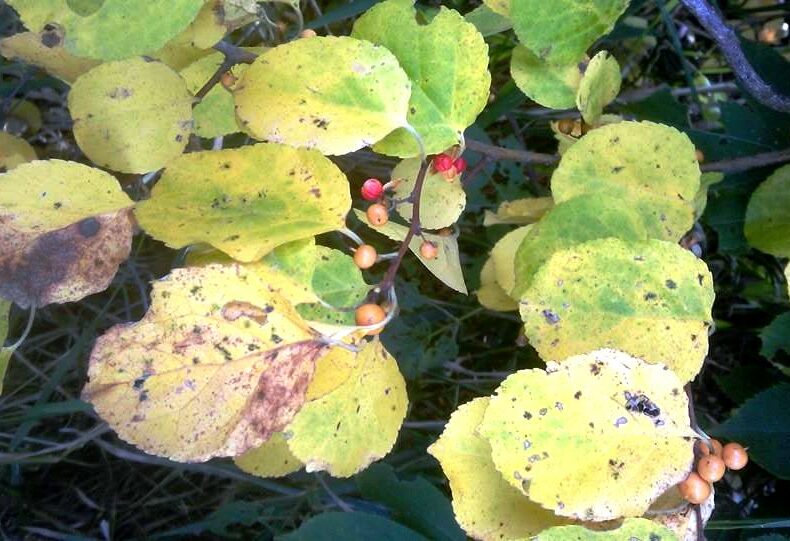Updates & Stories
Sherburne National Wildlife Refuge [Photo Blog]
My crew and I have had the good fortune of spending the last five weeks working with the U.S. Fish and Wildlife Service at the Sherburne National Wildlife Refuge near Princeton, Minnesota. The refuge covers around 20,000 acres and is a mixture of remnant oak savannah, one of the most threatened ecosystems on the globe, as well as expansive wetlands and oak forest. It is an important breeding ground for many waterfowl and is well-known for its sandhill cranes. Numerous species of migratory birds and native wildlife also find sanctuary within the refuge’s boundaries.Now on our sixth and final week at the refuge, I’m having a hard time waxing poetic in a way that does the experience justice. Luckily, I carry a decent camera around in my pocket; perhaps some photographs can do the job for me. Read More
What are these pancakes on my feet and why do I need them?: A Southerner’s guide to snowshoes
I found myself buried in snow somewhere between “I think I can climb out” and “Maybe they’ll find me in a couple days”. As I lay there, it seemed to me that I was going about this whole walking in the snow business all wrong. The snowshoe is a foreign concept to those of us from the Southeastern U.S. For thousands of years however, the snowshoe represented the pinnacle of technology for traversing frozen landscapes. It was only logical then, that I should become proficient in the use of these vehicles if I had any intention of surviving Minnesota. So with a little trial and quite a bit of error I was able to devise a few tips for those with a more temperate disposition. Read More
Settling in
If I was able to run wild like a feline, I believe I would not hesitate one second in doing so. There are just so much places I want to see, smell and touch. A close friend once asked me about why I move so often. To that I replied with my own version of the greatest traveling quote I've ever encountered - so that I can come back home at some point and so that I can see where I come from with new eyes and extra colors. And you might see me different consequently of that. Coming back to where it all started is not the same as never leaving. By the way, the original quote is by author, Terry Pratchett. Read More
Lesson 1: Safety, Quality, Quantity
I know what you’re thinking, and you’re probably right. A blog about safety? How boring. I would have to agree. It’s not the most exciting, but by taking safety seriously, heeding all warnings, and wearing proper personal protective equipment (PPE) we can all help ourselves avoid serious harm. With that in mind, just humor me.The Corps values the safety of its members, plain and simple. If I had a dime for every time in the first few weeks I heard the words safety and PPE, I would probably have a fair few dollars to spend. In fact for chainsaw and wildfire training the instructors actually said that if we answered ‘safety’ for questions on the test that we just might receive some credit even if we didn’t know the answer. While that might be a bit of an exaggeration, it illustrates how we are to have situational awareness at all times and be very mindful of our actions; one little kickback of the chainsaw for a novice sawyer can cause a world of hurt. Read More
Pull to Start
I have always been a hands-on person when it comes to learning new things. When it comes to chainsaws, there is no better way. When I first started with the Conservation Corps in February I was so excited to get moving right away. As most people know that is not exactly how it works with a new job, especially one that involves close proximity to hazardous tools. The first week of training passed and I had yet to hold, let alone see, a chainsaw and I was beginning to feel let down. On Monday of the following week we met at our shop in Rochester to begin a ten-day, intensive training course at White Water State Park. I was so stoked for this was finally the time we would begin training beyond the essentials, such as team work, ethics and everyone’s favorite, paperwork. Read More
Starting Cold Engines
I’ve gotta give a shout out to Stihl Chainsaws. At -20F it’s tough to get anything running at all, but with just a few pulls those saws were roaring and it was time to get to work. And so went the winter.I was hired back for another term with the Conservation Corps field crews, this time as the crew leader of the Metro Roving crew. Between the end of the last term and the beginning of the current term, those of us who were hired back worked as an interim crew on a couple of different projects. You may or may not recall but it was a particularly cold winter, the coldest in about 30 years in fact, and hence the coldest winter everyone on the crew has ever experienced. The fact that we continued to get work done each day (save the few that were called off due to dangerously cold temperatures) is testament to the reputation of the Corps and the ethic that is instilled in Corps members. We work smart and we work hard because we believe that our accomplishments are integral in conserving our environment. Read More
A year later: Reflections on 2013 Alaska deployment
I have been thinking about my life and my experience in Alaska. The villages especially are always on my mind. It’s been engraved in my brain as well as my heart. I'm sure the same can be said with you and many others that went there. At times when I feel overwhelmed with not knowing where my career path is heading, or when I encounter other woes about making student loan payments, wedding costs, broken cars, bills, etc. It dawns on me that those problems are not that bad to have. Seeing the villages and the conditions that the villagers live in makes my problems seem like luxuries. I have realized that is what they are. For the villagers, their problems are much greater. Not knowing where or when your next meal or even just a simple orange is going to come from. Read More
Safety first!
Most of the problems in life come because of two reasons. First, we act without thinking. Second, we keep thinking without acting. For some of us life is -sort of- figured out at different moments of our lives, after high school, during or after college, etc. At those points, we believe things are organized enough that it would not be much of a problem, and then we set cruise control. Ironically, that’s when we completely lose control. We lose track. We lose motivation. Sometimes we even lose ourselves and who we believe we want to be.I joined the Corps at the age limit, 25. Perhaps a bit too late, perhaps at the right moment. However, since the beginning I had so many questions and doubts about if this was going to be the right move for me. Will volunteering full-time interfere with my future plans? Will it be possible for me to live with an stipend and debt on my shoulders? What about the career I already started, will I have to start from zero again? What if Minnesota is not the right place? And questions kept coming, and coming, and coming. Read More
An intro and open letter to the sun
I’m Jackie, and I just moved all the way back to my home state of Iowa from Portland, Oregon for my new job. My position is pretty unique because I am working independently, a state away from the primary host organization. RREAL is based in Pine River, Minnesota while I am stationed with Hawkeye Area Community Action Program (HACAP) in Hiawatha, IA.RREAL provides solar furnaces, a service we call Solar Assistance, to low income families as a long-term alternative to standard energy assistance. Energy assistance is provided by community action programs (CAPs) such as HACAP. Read More
Oriental bittersweet
The cold weather has begun to set in here in southeast Minnesota! The leaves have been changing colors and many plants are losing their leaves, which means it is time to cut and spray invasive species that stay green long after other plants have died off for the winter! In addition to buckthorn which we have been feverously cutting because their ivy green leaves stick out like an eye sore, we have been searching for, GPSing, cutting and spraying the roots of invasive Oriental bittersweet (Celastrus orbiculatus). Read More
![Sherburne National Wildlife Refuge [Photo Blog]](https://conservationcorps.org/wp-content/uploads/2014/04/QZk72ON5sgKrKtuefuMZFFTlfUvRsmr8-FKy7bs66IQ7Y3VxIRU03ht-Vwx_vUAYcA3Dw1236-h661-790x545.jpg)



